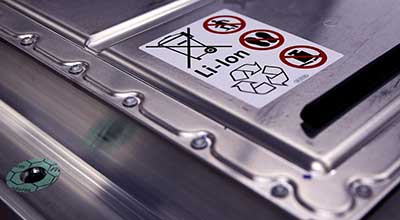Date: 28/10/2022
Relevance: GS-3: Science and Technology- developments and their applications and effects in everyday life
Key Phrases: Sustainability And Lifecycle Management Of Lib, Accelerated Go-To-Market Approach, Development Of Circular Economy Solutions, Cradle-To-Cradle Approach, Battery Waste Management Rules 2022
Why in News?
- The key aspects of safety and sustainability are posing impediments to the growth envisaged in lithium-ion battery (LIB) usage.
Various impediments to the growth of LIB:
- Safety issues with LIB:
- In India, reports of fatality and material loss due to fire from LIBs are on the rise due to defects in battery cells as well as in battery designs.
- Concerns around sustainability and lifecycle management of LIBs:
- The challenge of the ever increasing demand for metals required for the batteries and the mines as the only primary mineral source.
- Environmentally sustainable solutions to deal with the mountains of garbage created by end-of-life batteries.
- Challenge of Partial recovery of metals from recycling processes:
- Most recycling processes practise partial recovery wherein only high-margin metals are recovered from waste discarding the rest resulting in a loss of economic opportunity for the nations which continue to rely on high-cost imports.
- It also provides little economic incentive for other recyclers to recover low-margin metals from the discarded waste.
About Li ion batteries (LIB):
- Lithium-ion batteries use aqueous electrolyte solutions, where ions transfer to and fro between the anode (negative electrode generally made of graphite) and cathode (positive electrode made of lithium), triggering the recharge and discharge of electrons.
Features of LIB:
- Small size of the batteries
- light weight
- affordability
- the ability to sustain multiple charge cycles
- high energy density
Issues with Lithium-ion batteries
- One major issue is that lithium metal is extremely reactive.
- These have long charging times and weak energy density.
- The main form of lithium corrosion are dendrites, which are branched lithium structures that grow out from the electrode and can potentially pierce through the separator and on to the other end, short-circuiting the cell.
- In current lithium-ion batteries, in which the electrolyte is a flammable liquid, dendrite formation can trigger a fire.
- While lithium-ion batteries are seen as sufficiently efficient for phones and laptops, they still lack the range that would make EVs a viable alternative to the internal combustion engine.
How to ensure safety of the LIB?
- Designing vehicles that are lightweight in design offering maximum range and performance.
- Both range and fast charging aspects require thorough understanding of metal chemistries as well as the overall LIB system level.
- Metal compositions offer high performance and affordability since, cheaper metals and components (including battery management systems) ensure viability in a hugely competitive market.
- The quality of raw materials and components necessitates the need for high fidelity manufacturing practices.
- EV designs, deployed worldwide, need highly efficient thermal management systems and fault-detection mechanisms on account of the extreme temperature sensitivity of LIBs to avoid thermal runaways similar to the incidents that have been witnessed recently.
How to ensure sustainability and lifecycle management of LIBs?
- According to predictions, the volume of the end-of-life LIBs is likely to increase from 7,05,000 tonnes in 2025 to about 9 million tonnes by 2040.
- As the long-term sustainability of depending on primary mineral sources (mines) is in question, recycling is key.
- Unlike traditional practices, design of EVs is integrated with that of the battery and its components.
- The customisations on the battery end get more complex with new features like swappable battery options and connectivity requirements as in the case of autonomous cars.
- EVs therefore need an accelerated go-to-market approach to cater to the sustainability goals driven by organisations and nations across the world.
Government Measures to mitigate the environmental, social and financial impacts of LIB waste:
- The government has notified the Battery Waste Management Rules 2022 to manage a wide range of batteries that include LIBs.
- The mechanism of “Extended Producer Responsibility” (EPR) increases the accountability battery manufacturers need to assume towards collection, refurbishment/recycling of batteries.
- This move is expected to accelerate the development of infrastructure for waste collection and improve recycling rates from the mere 5-9 per cent, as it stands today.
What is the need of the hour?
- A mandated minimum percentage of recycled material in all products will open doors for new technologies to be adopted.
- Thus, the need of the hour is to accelerate the development of circular economy solutions that recycle all the metals and facilitate a cradle-to-cradle (infinite loop) approach.
- The ultimate goal is to meet sustainability goals and deploy technologies/best practices that reduce dependency on primary ores and unless that is done, partial recovery of metals or export of black powder (crushed battery waste) for recovery will continue.
- A strong collaboration among technologists, policy-makers and governments is required to help manage the ‘EV revolution’and bridge the huge gap between technology readiness that addresses both sustainability and safety issues in LIBs.
Source: The Hindu BL
Mains Question:
Q. What are the various impediments to the growth of lithium-ion battery usage? Suggest measures to tackle these concerns? (250 words).






















